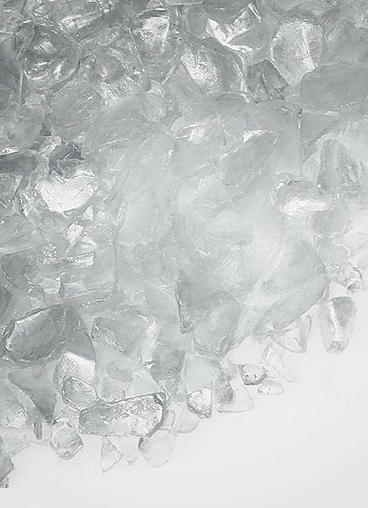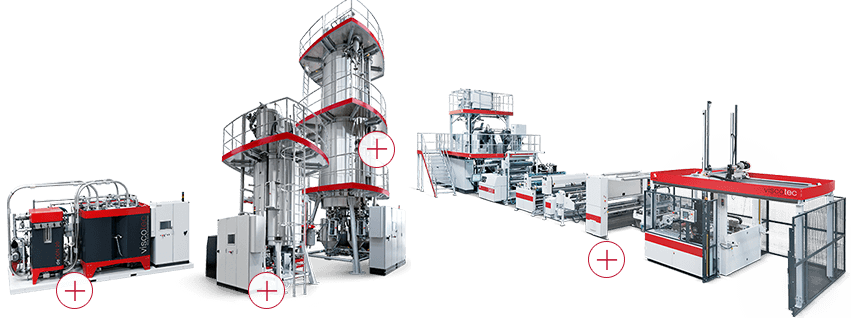Mechanical recycling had rapid development in the last years. Important components are:
- high tech sorting
- high efficient washing
- super clean technologies
To produce a super clean and food approved PET, it is necessary to have well treated and cleaned PET flakes. This is most important for excellent color-values and trouble free processing in all super clean technologies and downstream processes.
Texplast GmbH sorting and washing technology
Texplast sorting- and washing processes use state of the art technologies from STF (Aicha vorm Wald) and S+S (Schönberg). To get best grade PET bottles most suitable to the processing of flakes following procedures are necessary:
- Input of postconsumer bottles (PCB) from mandatory deposit system Germany (without non-food bottles)
- Removal of films and foils in a ballistic separator
- Removal of metals (Fe, Al) with magnetic drum and magnetic eddy current field
- Color-PVC-Separation with autom. sorting systems (NIR technology)
Discussion about substantial issues
In the sorting step it is substantial to eliminate metals, colored bottles (for natural transparent pellets), non-PET polymers, and most important PVC. PVC is a very high critical strange polymer for rPET. PVC is decomposing at 160°C (in extrusion) and leads – under splitting of hydrochloric acid – to strong discoloration of PET. Moreover it heavily decreases the intrinsic viscosity (iV) of PET in the extrusion process. To get good color of the clear (natural) flakes it is further substantial to eliminate colored bottles. The color of flakes and pellets is measured by CIELAB- system (L,a*,b*). Excellent rPET has L*-values near 70.
In the washing steps it is very important to have good intermixture and effective cleaning. That means to eliminate all dirtiness, glue, printing ink and pigments (from labels), other chemicals. This is achieved with washing solvent of hot water (60–75° C), 2–3 % caustic soda and small amounts of surfactants. Surfactants are surface active chemicals (non-ionic tenside) which are decreasing the surface tension of water and also binding dirtiness and disperse them. In any case, one has to find an optimum in concentration of tenside to avoid overconcentration and the occurrence of too much foam. Too much foam can negatively influence the flotation and separation of polyolefines.
When using water chemicals like tenside and defoamer it is always substantial to minimize the chemical input as much as possible to comply for food approval and waste water treatment in terms of ecological aspects. Waste water analyses are required and reported.
The processed water after the washing step has to be free of caustic soda to avoid alkaline hydrolysis of PET and stress corrosion in PET bottles.
Preparation and washing procedure
- manual sorting
- wet cutting of bottles
- wind screening for fines and dust
- rinsing of flakes
- two stage hot washing step
- PET-PO separation with flotation
- circulation system
Summary
The treatment and cleaning of PET flakes is substantial for getting high-quality PET pellets after super clean process. In order to get very good colors it is important to have clean flakes resulting from high tech sorting and efficient washing. These processes are the foundation for excellent color as well as high-end PET flakes and pellets. Customers who want to produce stable and continuous high-quality PET pellets have to consider these issues in the PET flake preparation.






